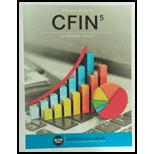
Weighted Average Cost of Capital (WACC) is the required
An optimal capital structure of a company is a mix of debt, equity and preferred stock which can be used to maximize the company’s stock price. Therefore, a target proportion of capital structure and cost of each financing can be used to determine the WACC of the company.
Here,
Proportion of debt in the target capital structure “
Proportion of preferred stock in the target capital structure “
Proportion of equity in the target capital structure “
After tax cost of debt, preferred stock,
The company’s capital structure is 40% debt and 60% equity. YTM on new bonds is 5%, cost of retained earnings and new common stock is 8% and 11% respectively.
Trending nowThis is a popular solution!

- critically discuss the hockey stick model of a start-up financing. In your response, explain the model and discibe its three main stages, highlighting the key characteristics of each stage in terms of growth, risk, and funding expectations.arrow_forwardSolve this problem please .arrow_forwardSolve this finance question.arrow_forward
- solve this question.Pat and Chris have identical interest-bearing bank accounts that pay them $15 interest per year. Pat leaves the $15 in the account each year, while Chris takes the $15 home to a jar and never spends any of it. After five years, who has more money?arrow_forwardWhat is corporate finance? explain all thingsarrow_forwardSolve this finance problem.arrow_forward
 EBK CONTEMPORARY FINANCIAL MANAGEMENTFinanceISBN:9781337514835Author:MOYERPublisher:CENGAGE LEARNING - CONSIGNMENT
EBK CONTEMPORARY FINANCIAL MANAGEMENTFinanceISBN:9781337514835Author:MOYERPublisher:CENGAGE LEARNING - CONSIGNMENT
